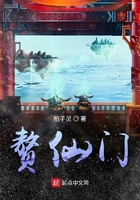The Dingo is found in Australia. It is a wild form of the domestic1 dog, and thus is a mammal. Dingoes are not by nature a pack dog, but rather live and hunt alone or in pairs or as a small family group. Dingoes appear to have clearly defined home territory2, though parts of this territory may be shared with other Dingoes.
The Dingo is not truly native to Australia and there are 2 common theories to its arrival to our shores: Dingoes were brought to Australia at least 15, 000 years ago by aboriginal3 people; The Dingo may have been related to the semi wild dogs found throughout Southeast Asia, and brought to Australia by sea travellers who used them for trade or eating.
Its shorthaired coat colour wise, ranges from reddish ginger, rust, yellow to brown and to black with white points on the feet and the tip of the tail. The Dingo has a fairly bushy tail, strong claws and a very angular alert looking head with erect4 ears. It does not bark.
The Dingo can be found in almost any part of the Australian mainland which provides access to drinking water. Because of this need for water the Dingo prefers the edge of forests near grasslands.
Dingoes are an opportunistic5 meateating animals hunting mainly at night. They prefer mammals but this diet can be supplemented by reptiles6, insects, etc. The size of their prey ranges from small rabbits, lizards7 through to sheep and kangaroos. Dingoes usually hunt alone or in pairs but when small game is scarce and larger prey must be tackled8, cooperative hunting takes place.
The female Dingo gives birth to between one and eight pups9 in spring. Both the male and female Dingoes take part in raising pups, which stay with the parents for a period of 12 months up to 3 years. Pups are born blind but with a good covering of fur. About 4 months old, they are capable of starting to try and hunt for themselves, able to eat and hunt small game such as rabbits.
【生词注释】
1. domesticadj. 家庭的, 驯养的2. territoryn. 领地; 领土
3. aboriginaladj. 土著的4. erectadj. 直立的;竖起的
5. opportunisticadj. 机会主义的;投机取巧的6. reptilen. 爬行动物, 爬虫
7. lizardn. 蜥蜴8. tacklevt.& vi. 捉住; 扭倒
9. pupn. 幼犬
1. The underlined words “a pack dog” in Paragraph 1 refer to .
A. a dog which stays in groups
B. a dog which is packed with food
C. a dog which often works together
D. a dog which has enough habitats
2. Which of the following is NOT mentioned in the text?
A. Dingoes habitats.
B. Dingoes history.
C. Dingoes appearance.
D. Dingoes population.
3. At times, Dingoes have to work together to .
A. fetch water from faraway places
B. hunt big and strong animals
C. share larger hunted animals
D. bring up their young
4. Which of the following is TRUE about Dingoes?
A. Dingoes never bark in the day or at night.
B. Dingoes have only a little eyesight.
C. Dingoes do not live in desert areas.
D. Dingoes are not caring animals.
Many people mistakenly1 think Canada stopped hunting baby seals years ago. But as many seals are killed today as during the 1950s and 60s when overhunting pushed seals down the road to extinction.
Each spring, on the East coast of Canada female harp seals2 gather by the hundreds of thousands on newly formed sea ice to give birth to their pups. The newborn pups will change into fat, soft “whitecoats” in about a week, thanks to the highfat content of their mothers milk.
After about 12 days, the mother leaves her fully fed pups to join adult males for the yearly mating ritual3. The baby seals remain on the ice, crying for their mothers at first, then becoming extremely quiet and still. During this time the pups survive on the thick layer of fat they have got during nursing. A few days later, their white coats are lost to take on the smooth, blackspotted, silvery pelt4, which they will soon be beaten or shot to death for.
The scene is extremely attractive and impressive-a world built entirely of blue, grey and white. The only sounds are the wind, the ice cracking and rising, and the soft mews of the pups.
Yet just days later, this pure wonderland is transformed into a factory for the mass killing of baby seals as sealers attack them in boats, helicopters and snow mobiles, armed with clubs5 and guns.
Over the past three years, the government has allowed over 300,000 seals to be killed each year. But many more have died without being accounted for, leaving more than a million seals killed, all in the name of profit.
【生词注释】
1. mistakenlyadv. 错误地
2. harp seals格陵兰海豹
3. mating ritual交配周期
4. peltn. 毛皮
5. clubn. 大棒, 棍棒
1. From the passage, we can know that .
A. adult seals start to change skin when winter is coming
B. hundreds of thousands of baby seals are born into the world when spring comes
C. baby seals swim southward with their mothers when winter is coming
D. people stop hunting seals for a while when spring comes
2. After mother seals leave, .
A. father seals take care of the baby seals instead
B. baby seals eat nothing for a period of time
C. baby seals have to hunt for food by themselves
D. baby seals are crying for their mothers all the time
3. The fourth paragraph is written to show .
A. baby seals peaceful life at first
B. baby seals poor living condition
C. dangers around the baby seals
D. beautiful scenery on the East coast of Canada
4. We can infer from the passage that .
A. less and less seals are being killed today
B. many baby seals die of hunger and diseases
C. father and mother seals look after their babies together
D. the killing of baby seals is allowed in Canada
Chinese scientists have found 11 giant pandas living in the wild in northern China. This showed that the endangered1 species is still holding on in spite of threats to its habitat, experts said on Friday.
The discovery in Shaanxi Province was quite unusual since the panda is an elusive2 creature and scientists have often had to depend on paw tracks and waste to approximate3 the panda population numbers. “Ordinary people think the giant panda is a ‘dead end’ species, but that is a misunderstanding,” said Yuchangying, coordinator of the World Wildlife Funds Giant Panda Programme. Yu estimated4 there were about 1,500 wild pandas, more than half of them living in foggy, mountainous nature reserves in south central China.















